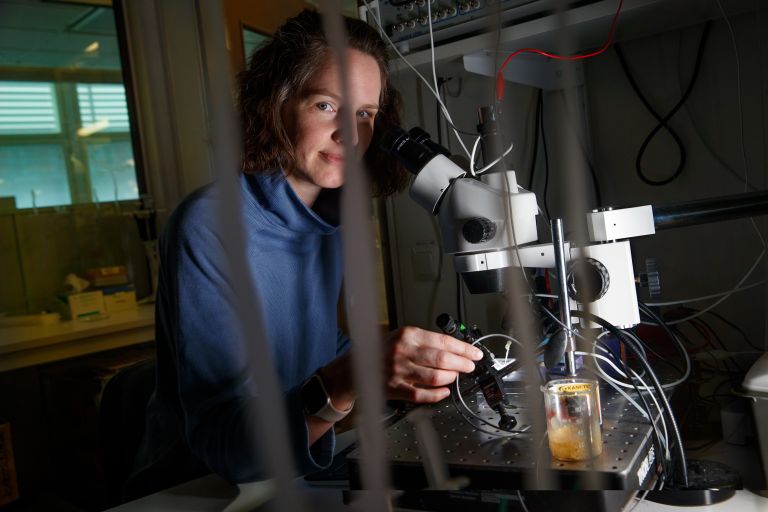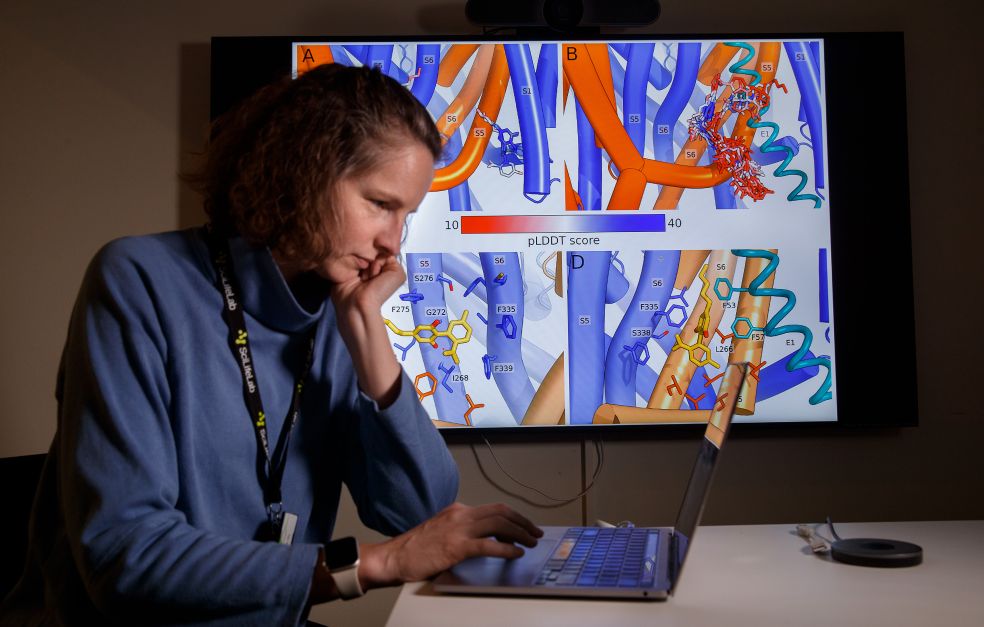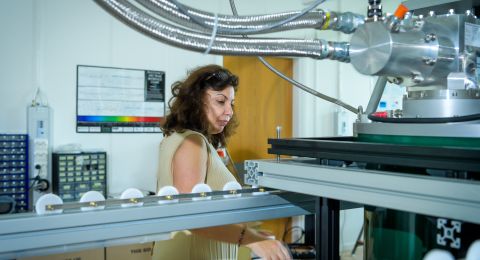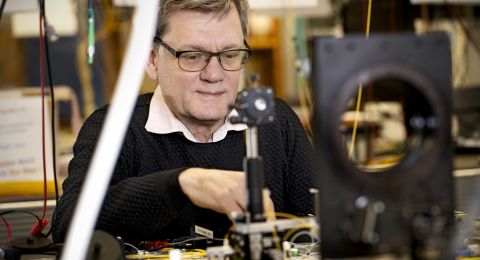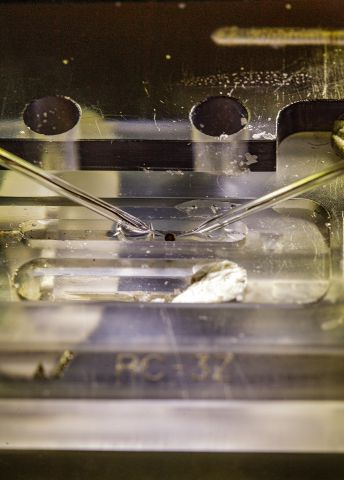
Project grant 2022
From Atom to Organism: Bridging the scales in the design of ion channel drugs
Project grant 2022
From Atom to Organism: Bridging the scales in the design of ion channel drugs
Principal investigator:
Lucie Delemotte, Professor of Computational Biophysics
Co-investigators:
Chalmers University of Technology:
Simon Olsson
Linköping University:
Sara Liin
Stockholm University:
Christian Broberger
Lund University:
Pontus Gourdon
Institution:
KTH Royal Institute of Technology
Grant:
SEK 27.1 million over five years
Every heartbeat and every neural impulse in the body is governed by the flow of charged molecules into and out of our cells. This is regulated by ion channels: specialized protein complexes that form gateways through the membrane of the cell.
Ion channels are central to many bodily functions, and their malfunction can have severe consequences. Epilepsy, paralysis and heart arrhythmia are some of the conditions that can be attributed to faulty ion channels in various parts of the body.
This makes ion channels attractive targets for drugs, but their development has proven challenging. One difficulty is making the drugs specific enough to target only the desired ion channel type, avoiding side-effects caused as they impact closely related channels.
“A particular difficulty is developing molecules that open ion channels. To do this, you need a fairly detailed understanding of how ion channels work,” says Lucie Delemotte, professor of computational biophysics at KTH Royal Institute of Technology and SciLifeLab in Stockholm.
She is leading a project funded by Knut and Alice Wallenberg Foundation, uniting researchers from five universities with the goal of developing a new strategy for designing drug molecules targeting ion channels. The focus is on “Kv7 channels”.
“They are absolutely fascinating. They are found in several different tissues in the body, and we know they offer potential as drug targets, but success has so far been limited.”
Kv7 channels allow potassium (K) to leave cells in response to changes in electrical voltage (see fact box). The number seven refers to the seventh of the body’s twelve families of voltage-gated potassium ion channels.
AI suggests molecules
The researchers are studying ion channels on several scales: their atomic structure, how they move, how they function in cells and animals, and the effect when they are impacted by a specific molecule. The results from all these experiments will be integrated using machine learning and used to build an AI model.
“AI can detect patterns that humans can’t see. The idea is that the AI model will be able to suggest new molecules expected to have a specific effect on specific ion channels. We can test these molecules experimentally and if the results differ from expectations, we will update our database with the new information and retrain the model. We will continue this process until we identify a molecule we’re satisfied with,” says Delemotte.
The AI part of the project is being led by Simon Olsson at Chalmers University of Technology in Gothenburg.
The three-dimensional structure of ion channels and how they bind to various molecules is being determined using cryo-electron microscopy by a team led by Pontus Gourdon at Lund University. These structures form the basis for work in Delemotte’s lab, where researchers are performing computer-based simulations to observe changes over time.
“This is the result of a simulation. We see the molecule moving in the ion channel. The time it takes to enter and exit the binding pocket and the amino acids it interacts with during this process are key factors when designing a molecule that binds well,” says Delemotte, demonstrating the process on a computer screen.
Testing on frogspawn
An important impetus behind the project was Delemotte's collaboration with Sara Liin at Linköping University. In her lab, researchers are studying the function of Kv7 channels in cells and how certain substances impact them. Frogspawn is often used as a model system because the eggs are fairly large and easy to handle. They can be made to produce human ion channels, and the researchers measure how ion currents in them are affected by different molecules.
The project includes a team investigating behavioral changes in rodents exposed to molecules impacting Kv7 channels, led by Christian Broberger, professor of neurochemistry at Stockholm University.
“It’s fantastic that all this expertise exists in Sweden. Some of us had worked together before, but not all, and I’m thrilled to have brought this team together. And it’s a great bunch of people – we have fun and laugh a lot,” says Delemotte.
The project will provide new insights into ion channels and hopefully identify new ways to influence them. This could involve making use of more unusual binding modalities, such as molecules binding to the cell membrane or to binding pockets in the ion channel accessible only in certain states.
“Ideally, we will identify molecules that can serve as a basis for further drug development. We also hope this method can serve as a model for designing drugs aimed at targets of other kinds,” says Delemotte.
Text Sara Nilsson
Translation Maxwell Arding
Photo Magnus Bergström
Potassium ion channels slow down cell activity
Voltage-gated potassium ion channels regulate the flow of potassium ions out of the cell and are controlled by the voltage across the cell membrane, known as the “membrane potential.”
The channels are closed when the interior of the cell is negatively charged and open when the interior becomes positively charged. When the channel is open, potassium ions exit the cell.
Opening potassium ion channels reduces or stops cell activity, and they are sometimes described as brakes. This mechanism plays a central role in many bodily functions, including neural signaling and muscle contractions.
